Sarah Moon - Photographs and Films at MAM. Beverly Held, Ph.D. aka Dr. B
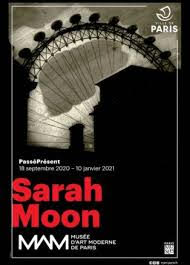
Figure 1 Sarah Moon Exhibition Poster, MAM
I was at the Luxes exhibition at MAD-Paris the Tuesday before re-confinement, as you know, when my friend Claire reported what she was reading on her ‘news feed’. Contrary to what we had been led to believe, because it had sort of been reported, we were not about to have a slightly earlier curfew in the weeks ahead, with confinement during the weekends. No, we were set to begin another full-out confinement. Which we all assumed would start Saturday night. Which gave me a few days to visit as many museums as I could. So, I rushed home to make reservations. The Matisse show at the Pompidou had no availability, even when I used our dear leader’s name (Terrance, not Trump). However, I was able to book the Musee d’Art Moderne de Paris for Thursday. Which will be the subject, eventually, of this review. Which I suppose I should tell you is now known as ‘MAM'. Next I booked the Louvre for Friday. I was feeling pretty good. Then President Macron spoke on Wednesday evening (in complete sentences, like an adult). He told us that the confinement would start at 20h00 the next day, Thursday. That was abrupt. Ah well, the Louvre and the Pompidou will have to wait. The exhibition I am about to discuss was the last exhibition I saw before everything went dark, again, in the City of Light. A sense of sadness is coupled with a hope that you, as well as I, survive the next wave of this pandemic and that on the other side is a little sanity and a lot of joy. (Figure 2)
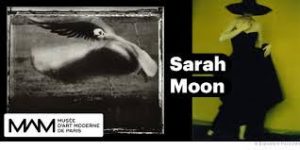
Figure 2. Sarah Moon, Exhibition Poster, MAM 2020
The exhibition, entitled PasséPresent Sarah Moon is a retrospective of the work by the photographer, Sarah Moon. And as with almost all the exhibitions I see, there are synchronicities aplenty. Like Man Ray, Sarah Moon’s photographs adorn the covers and pages of fashion magazines. Like Richard Avedon, Sarah Moon has done fashion shoots for a variety of fashion houses. Like Lee Miller, Sarah Moon started out as a model and became a photographer. And Sarah Moon learned her craft from watching the photographer Guy Bourdin, who (like Lee Miller before him) went to Paris specifically to work with Man Ray. Like Cindy Sherman, Sarah Moon is a female photographer who photographs fashion. And finally, like David Hockney, Sarah Moon was interviewed about her exhibition during our first confinement. Hockney said the confinement hadn’t bothered him a bit. Spring still happened, he still painted. Sarah Moon said that confinement here in France was a gift of time. And again, like Hockney, her exhibition is ‘on-hold’ now, as we all are, during Confinement Redux.
Sarah Moon was born Marielle Hadengue in 1941, in Vernon, France to a Franco-American father and French mother. Her family was Jewish. They fled occupied France for England where Marielle grew up. From the age 19 to 25 (1960-66) she worked as a model in London and Paris. As a model, she was photographed by some of the most sought after photographers of the day, like the aforementioned Guy Bourdin as well as Irving Penn and Helmut Newton. With no professional training in photography, she began experimenting with the camera, taking photos of her friends, other models.
When a photographer did not show up for a fashion shoot, she was asked to try her hand. Her photos were a success and her career was off and running. She changed her name to Sarah Moon and was hired by her friend Barbara Hulanicki to take photos of her wildly popular London fashion store, Biba. (Figure 3) Following that success, the designer Jean Bousquet asked her to photograph for Cacharel clothing and perfume (Figure 4). After Cacharel came the fashion houses of Dior, Chanel, Comme des Garcons, Christian Lacroix, Issey Miyake, etc. and work for fashion magazines like Vogue, Elle, Harper’s Bazaar, Marie-Claire and Life. It is interesting, as these things go, that at the age of 28, in 1969, Sarah Moon met the multi-talented publisher of documentary photography books and editor-in-chief of the cultural review Neuf, Robert Delpire, 15 years her senior, with whom she shared her life for 48 years, until his death in 2017.
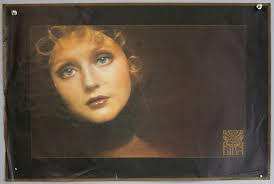
Figure 3. Sarah Moon, poster for Biba
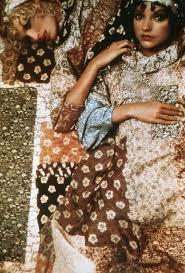
Figure 4. Sarah Moon for Cacharel
How does someone who has been the object of the male gaze professionally, who had been told (presumably) to ‘make love to the camera,’ change the narrative and control the gaze. We know that works of art both reflect and shape stereotypes. It would seem that a woman behind the camera, rather than in front of it, has two choices, to outdo the men at their own game or attempt to master the gaze in another way. Sarah Moon has been doing the latter for years. She uses her own experiences to subvert the traditional male narrative. In her photos, Sarah Moon’s gaze is the female gaze.
I might as well acknowledge that there is going to be a wee bit of feminism here. (Figure 5) I am sure you can handle it, unless you think that ‘grabbing them by their (you fill in the blank)’ is okay if you are running for political office, or if you think that Harvey Weinstein really needs that walker with those tennis balls or if you think that a Phyllis Schlafly clone to replace Ruth Bader Ginsberg on the Supreme Court, is a good idea. May I remind those of you who answered yes to any of the statements above that denial is not just a river in Egypt.
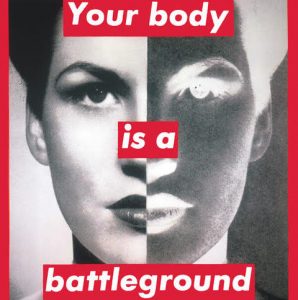
Figure 5. Your Body is a battleground. Barbara Kruger, for Women’s March on Washington, 1989
Obviously the issue of ‘the gaze’ is not new. Let me just mention a few things by way of background. In 15th century Florence, wealthy young women were confined to the upper quarters of their homes and young girls in Venice were sent to nunneries, both strategies to keep them unseen and to protect their purity until a suitable marriage could be arranged. (Figure 6) And I could mention, too that during the 17th century, when older women got a little too powerful, a little too independent, they would be condemned, tortured and executed as witches. You may remember that Kiki Smith has proposed memorials for those forgotten witches in Germany and elsewhere in Europe. Alas, she hasn’t gotten any commissions yet. (Figure 7)
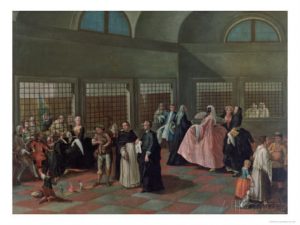
Figure 6. Visiting a nunnery. Pietro Longhi, 18th century
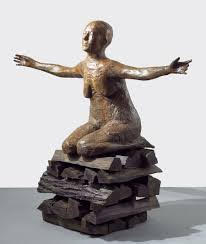
Figure 7. Witch memorial proposal, Kiki Smith
While we are at it, what about the 19th century flaneur. The man who strolled, sauntered, wandered, without purpose or plan, who looked without being seen, who was not accosted, whose right to be out and about was not questioned. There is a series of travel books now called The Flâneuse, but in the 19th century, there were no flâneuses, because women were the object of the male gaze. A woman who was out alone in public was assumed to be a fille publique, a prostitute. A respectable woman, a femme honnête, stayed confined to her own sphere, or went shopping.
The 19th century distinctions between the masculine sphere and the feminine one are very clear when we compare paintings by the women impressionists, Berthe Morrisot and Mary Cassatt with their male colleagues, Manet, Monet, Degas, etc. Both women depicted their female friends and family members in familiar surroundings, engaged in appropriately genteel activities. (Figure 8) Their male colleagues, whether they were in the streets or in the cafes and bars, were masters of what they observed, of what they surveyed.(Figure 9)
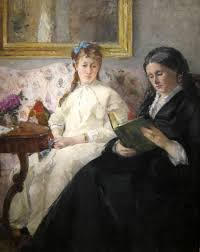
Figure 8. The Mother and Sister of the Artist, Berthe Morisot, 1870

Figure 9. Corner of a Cafe-Concert, Edouard Manet, 1878-80
To return to the 20th - 21st centuries and Sarah Moon’s fashion photographs. They are soft-focus while her male colleagues’ photos are sharp and glossy. (Figure 10, Figure 11) She seldom shows the entire figure in her fashion work, the faces of her models are hidden or they are seen from the back. Their heads are sometimes cropped. But unlike photographs by Moon's male colleagues, there is no sense of violence or violation.
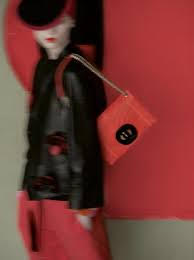
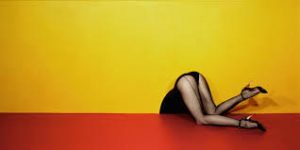
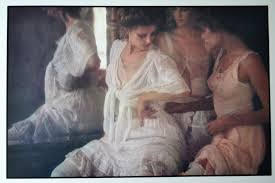
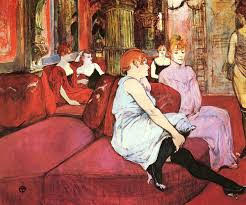


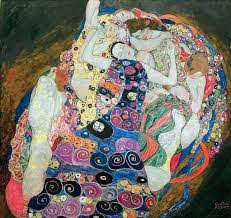
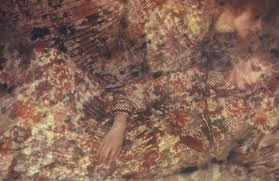

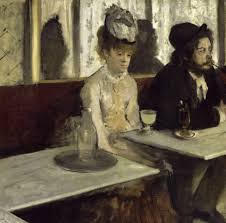

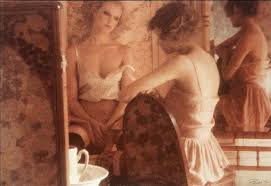
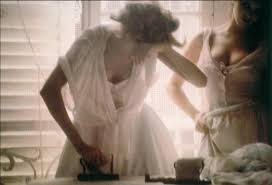
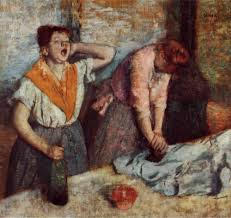

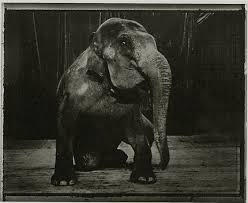



2 comments
D. Remenick November 10, 2020
Fabulous as always. Hopefully the museums will open up soon. Hopefully we in the US will. Erin a serious lockdown once Biden takes office so that we can arrest the tragic escalation of COVID here.
Kathryn Joseph November 11, 2020
Dr. B has once again endowed us with a unique and extraordinary learning moment.